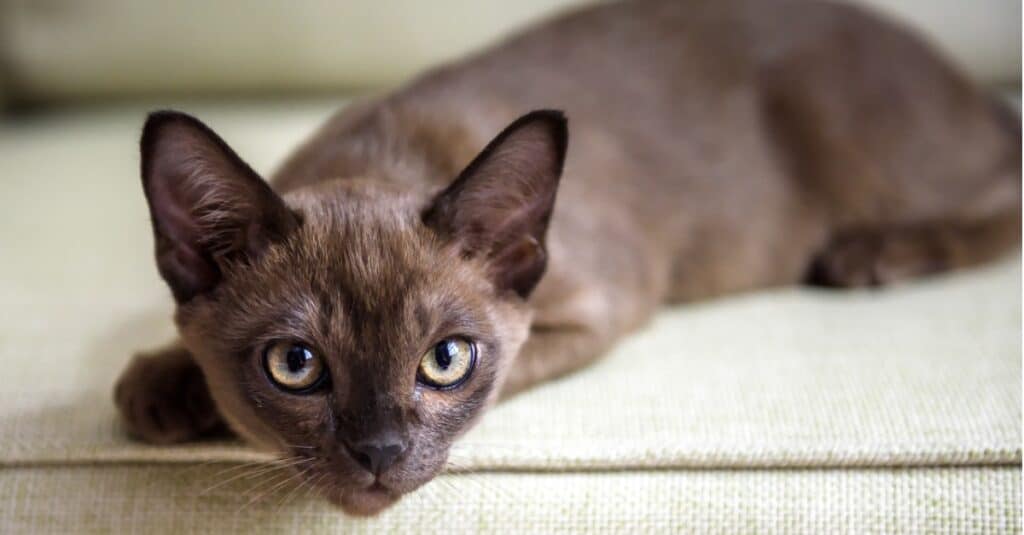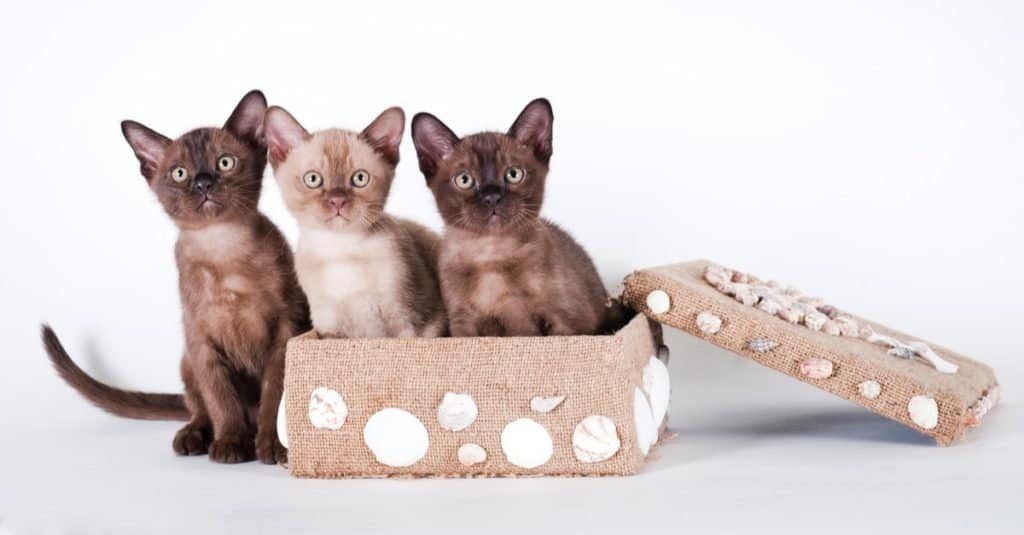Are you thinking of adopting a Burmese cat, or do you already have one of these gorgeous kitties in your home? You might wonder about the Burmese cat’s lifespan, how long they live on average, and how to help them live longer.
Burmese cats can live well into their teens and even their early twenties! There are risk factors that make Burmese more likely to die young, such as poor breeding, free-roaming outdoors, and lack of veterinary care.
In this article, we’ll discuss how long Burmese cats live, their life cycle, and how to keep your Burmese healthy and thriving for as long as possible.
How Long do Burmese Cats Live?

While we don’t have accurate data on how cat breeds impact lifespan, we do know that housecats often live into their teens and early twenties.
©iStock.com/scaliger
Burmese cats typically live longer than mixed breed (domestic short or longhaired) cats. However, there aren’t many studies on cat lifespan or the impact breed has on how long cats live.
You’ll find sources that state anything from 9-13 years to 18-25 years, but the truth is that we need more scientific data before we have an answer to this particular question.
The Average Burmese Cat Life Cycle

Burmese kittens are ready for adoption at eight weeks old, but some breeders and kitten fosters wait longer to give them more time to develop and socialize.
©Anton Saiun/Shutterstock.com
Newborn-Eight Weeks
Until eight weeks of age, Burmese kittens should remain with their mother and siblings. Burmese cats are born helpless and completely dependent on their mother. They develop quickly, however.
By one week old, they can see and hear–though not very well. They gain the ability to play, eat solid food, and use the litterbox during week three. The mother cat weans them by the time they’re six to eight weeks old.
Kittenhood
Burmese cats are technically kittens until one year old, though they’ll retain a young, boisterous energy beyond this time.
It’s important for kittens to grow up around other kittens, which is why many breeders and rescues will recommend adopting two, rather than one. Well past weaning age, they teach each other skills like nice play and even household manners.
Two kittens also occupy one another and are typically easier to handle than a solo kitten. Of course, you’ll also want to socialize your Burmese kittens with people and get them used to handling, such as brushing their coats and trimming their nails.
You’ll also want to have your kittens spayed or neutered. Most vets recommend the procedure early, before the cats are five months old, to prevent unwanted pregnancies.
Adulthood
Adult Burmese are known for being sweet, affectionate, and playful. They enjoy (and require!) daily play, and they typically enjoy being handled. However, every Burmese has different preferences.
These cats are smart as well! They’ll pick up on tricks quickly and get a lot of mental enrichment through training.
Adult cats tend to be lower maintenance than kittens and seniors, but they still require attention, daily care, and vet visits at least once a year.
Senior Years
As your Burmese cat enters their senior years, they’re likely to play less and sleep more. Like humans, it’s very common for senior cats to develop arthritis and other health problems.
Routine bloodwork done every six months can help you keep on top of their health and ensure that, if problems do arise, you can catch and treat them early.
Factors that Threaten the Burmese Cat’s Lifespan

Keeping your Burmese cat indoors drastically increases their life expectancy.
©Lynne Bentley/Shutterstock.com
Genetics
We can’t always control our cats’ genetics, but they have a huge impact on lifespan. Many illnesses are genetic, and some can be screened for in the parent cats before breeding a litter.
Only purchase kittens from breeders who complete all recommended health tests for their breed, and never buy from someone willing to breed cats with genetic health problems.
Since Burmese cats are brachycephalic, or short-snouted, their breed standard encourages poor breeding that can cause health issues such as difficulty breathing, exercise intolerance, and brachycephalic airway syndrome.
If you’ve already adopted your Burmese cat, or you’re adopting from a rescue or shelter, you won’t have control over their ancestry. However, there are still a few things you can do to increase their lifespan. These include bringing them to annual vet visits, providing daily exercise, and feeding a quality, vet-recommended diet.
Health Problems
Burmese cats are prone to some genetic health issues, including:
Free-Roaming Outside
Free-roaming cats typically have much shorter lifespans than indoor-only felines, and their deaths tend to be more gruesome. Threats that outdoor cats face include:
- Traffic
- Predators
- Dogs
- Cat fights
- Disease
- Parasites
- Ill-intentioned humans
- Poisoning from plants or other substances, such as antifreeze
If you’d like your Burmese cat to experience the great outdoors, the safest ways are to build an enclosed catio (cat patio) or to harness train them. This allows them to explore safely.
Talk to your veterinarian about parasite preventatives and vaccinations they recommend before letting your cat outside.
Thank you for reading! If you have feedback on this post, please contact the AZ Animals editorial team.
The photo featured at the top of this post is © Julija Sulkovska/Shutterstock.com
Thank you for reading! Have some feedback for us? Contact the AZ Animals editorial team.






